
Operator’s Manual
Notice d'emploi
Roller
Rouleau
RD7
Type RD7
Document
5200016822
Date 0117
Revision 04
Language
EN
-FR
5200016822

Copyright notice
© Copyright 2017 by Wacker Neuson Production Americas LLC
All rights, including copying and distribution rights, are reserved.
This publication may be photocopied by the original purchaser of the
machine. Any other type of reproduction is prohibited without express
written permission from Wacker Neuson Production Americas LLC.
Any type of reproduction or distribution not authorized by Wacker
Neuson Production Americas LLC represents an infringement of valid
copyrights. Violators will be prosecuted.
Trademarks
All trademarks referenced in this manual are the property of their
respective owners.
Manufacturer
Wacker Neuson Production Americas LLC
N92W15000 Anthony Avenue
Menomonee Falls, WI 53051 U.S.A.
Tel: (262) 255-0500 · Fax: (262) 255-0550 · Tel: (800) 770-0957
www.wackerneuson.com
Original instructions
This Operator’s Manual presents the original instructions. The original
language of this Operator’s Manual is American English.

RD7 Foreword
wc_tx003604gb_FM10.fm 3
Foreword
SAVE THESE INSTRUCTIONS—This manual contains important instructions for
the machine models below. These instructions have been written expressly by
Wacker Neuson Production Americas LLC and must be followed during installation,
operation, and maintenance of the machines.
Machine
identification
A nameplate listing the model number, item number, revision number, and serial
number is attached to this machine. The location of the nameplate is shown above.
Serial number
(S/N)
For future reference, record the serial number in the space provided below. You will
need the serial number when requesting parts or service for this machine.
Machine
documentation
■ From this point forward in this documentation, Wacker Neuson Production
Americas LLC will be referred to as Wacker Neuson.
■ Keep a copy of the Operator’s Manual with the machine at all times.
■ For spare parts information, please see your Wacker Neuson Dealer, or visit the
Wacker Neuson website at http://www.wackerneuson.com/.
■ When ordering parts or requesting service information, be prepared to provide
the machine model number, item number, revision number, and serial number.
Machine Item Number
RD7He 5200015241, 5200015244, 5100017193, 5100017194, 5100018451
RD7H 5200015242, 5200015245, 5100017195, 5100017338
RD7A 5200015243, 5200015246, 5100017196
RD7Ye 5100027116, 5100027117
5200017248
wc_gr011530
Serial Number:

Foreword RD7
4 wc_tx003604gb_FM10.fm
Expectations
for
information in
this manual
■ This manual provides information and procedures to safely operate and
maintain the above Wacker Neuson model(s). For your own safety and to
reduce the risk of injury, carefully read, understand, and observe all instructions
described in this manual.
■ Wacker Neuson expressly reserves the right to make technical modifications,
even without notice, which improve the performance or safety standards of its
machines.
■ The information contained in this manual is based on machines manufactured
up until the time of publication. Wacker Neuson reserves the right to change any
portion of this information without notice.
■ The illustrations, parts, and procedures in this manual refer to Wacker Neuson
factory-installed components. Your machine may vary depending on the
requirements of your specific region.
CALIFORNIA
Proposition
65 Warning
Combustion exhaust, some of its constituents, and certain vehicle components
contain or emit chemicals known to the State of California to cause cancer and
birth defects or other reproductive harm.
Laws
pertaining to
spark
arresters
NOTICE: State Health Safety Codes and Public Resources Codes specify that in
certain locations spark arresters be used on internal combustion engines that use
hydrocarbon fuels. A spark arrester is a device designed to prevent accidental
discharge of sparks or flames from the engine exhaust. Spark arresters are
qualified and rated by the United States Forest Service for this purpose. In order to
comply with local laws regarding spark arresters, consult the engine distributor or
the local Health and Safety Administrator.
Manufacturer’s
approval
This manual contains references to approved parts, attachments, and
modifications. The following definitions apply:
■ Approved parts or attachments are those either manufactured or provided by
Wacker Neuson.
■ Approved modifications are those performed by an authorized Wacker
Neuson service center according to written instructions published by Wacker
Neuson.
■ Unapproved parts, attachments, and modifications are those that do not
meet the approved criteria.
Unapproved parts, attachments, or modifications may have the following
consequences:
■ Serious injury hazards to the operator and persons in the work area
■ Permanent damage to the machine which will not be covered under warranty
Contact your Wacker Neuson dealer immediately if you have questions about
approved or unapproved parts, attachments, or modifications.

2016-CE-RD7_en_FM10.fm
EC Declaration of Conformity
Manufacturer
Wacker Neuson Production Americas LLC, N92W15000 Anthony Avenue,
Menomonee Falls, Wisconsin 53051 USA
Product
Product
Product category
Product function
Item number
Net installed power
Measured sound power level
Guaranteed sound power level
RD7He, RD7H RD7A RD7Ye
Vibrating Walk-Behind Rollers
To compact asphalt
5200015244, 5100017194,
5200015245, 5100017338
5200015246 5100027117
6.1 kW 7.2 kW 6.09 kW
105 dB(A) 106 dB(A)
108 dB(A) 108 dB(A)
Conformity Assessment Procedure
According to ANNEX VIII
Notified Body
Lloyds Register Verification Limited (Notified Body No 0038)
71 Fenchurch Street, London EC3M 4BS, United Kingdom
Directives and Standards
We hereby declare that this product meets and complies with the relevant regulations and
requirements of the following directives and standards:
2006/42/EC, 2000/14/EC, 2005/88/EC, 2014/30/EU, EN 500-1, EN 500-4
Authorized Person for Technical Documents
Robert Raethsel, Wacker Neuson Produktion GmbH & Co. KG, Wackerstrasse 6,
85084 Reichertshofen, Germany
Menomonee Falls, WI, USA, 11.01.2017
Original Declaration of Conformity
Keith Herr
Vice President and Managing Director
For Wacker Neuson
Paul Sina
Manager, Product Engineering
For Wacker Neuson
Jeff Volden
Director, Product Engineering
For Wacker Neuson


Table of Contents
RD7
wc_bo5200016798_04_FM10TOC.fm
7
Foreword 3
EC Declaration of Conformity 5
1 Safety Information 11
1.1 Signal Words Used in this Manual ..................................................... 11
1.2 Machine Description and Intended Use ............................................. 12
1.3 Safety Guidelines for Operating the Machine ..................................... 13
1.4 Service Safety .................................................................................... 15
1.5 Operator Safety while Using Internal Combustion Engines ............... 17
1.6 Hydraulic Fluid Safety ........................................................................ 18
1.7 Safety Guidelines for Lifting the Machine ........................................... 18
2 Labels 20
2.1 Label Locations .................................................................................. 20
2.2 Label Meanings .................................................................................. 21
3 Lifting and Transporting 30
3.1 Lifting the Machine ............................................................................. 30
3.2 Tying Down and Transporting the Machine ........................................ 31
4 Operation 32
4.1 Preparing the Machine for First Use ................................................... 32
4.2 Machine Components ........................................................................ 33
4.3 Machine Components Descriptions .................................................... 35
4.4 Using the Back-Up Stop Pad .............................................................. 36
4.5 Using the Parking Brake ..................................................................... 36
4.6 Using the Watering System ................................................................ 37
4.7 Using the Vibration System ................................................................ 37
4.8 Using the Protection Kit (Optional) ..................................................... 38
4.9 Adjusting the Locking Plate ................................................................ 39
4.10 Functions of the Throttle Lever ........................................................... 41
4.11 Direction and Speed Control .............................................................. 42
4.12 Before Starting ................................................................................... 43
4.13 Refueling the Machine ........................................................................ 43
4.14 Position of the Operator and Handle .................................................. 44
4.15 Machine Stability ................................................................................ 45

Table of Contents
RD7
wc_bo5200016798_04_FM10TOC.fm
8
4.16 Operating on Slopes ...........................................................................46
4.17 Rollovers .............................................................................................46
4.18 Starting the Machine (Hatz Engine) ....................................................47
4.19 Cold Weather Starting (Hatz Engine) .................................................49
4.20 Starting the Machine (Hatz Engine with Electric Start) .......................52
4.21 Stopping the Machine (Hatz Engine) ..................................................54
4.22 Starting the Machine (Honda Engine) .................................................55
4.23 Stopping the Machine (Honda Engine) ...............................................56
4.24 Starting the Machine (Yanmar Engine) ...............................................57
4.25 Starting the Machine (Yanmar Engine with Electric Start) ..................59
4.26 Stopping the Machine (Yanmar Engine) .............................................61
4.27 Emergency Shutdown Procedure .......................................................62
5 General Maintenance 63
5.1 Periodic Maintenance Schedule .........................................................63
5.2 Scraper Bars .......................................................................................64
5.3 Water Spray Bars ...............................................................................65
5.4 Lubricating the Back-up Stop Mechanism ..........................................66
5.5 Hydraulic Oil Requirements ................................................................67
5.6 Checking and Changing the Hydraulic Oil and Hydraulic Filter ..........68
5.7 Maintaining the Battery .......................................................................71
5.8 Engine - Jump-Starting .......................................................................72
5.9 Cleaning the Machine .........................................................................74
5.10 Long-Term Storage .............................................................................75
5.11 Machine Disposal / Decommissioning ................................................76
6 Engine Maintenance: Hatz 1D42 77
7 Engine Maintenance: Honda GX390 79
8 Engine Maintenance: Yanmar L100N 81
9 Troubleshooting 84

Table of Contents
RD7
wc_bo5200016798_04_FM10TOC.fm
9
10 Technical Data 86
10.1 Engine—Hatz ..................................................................................... 86
10.2 Engine—Honda .................................................................................. 87
10.3 Engine—Yanmar ................................................................................ 88
10.4 Roller .................................................................................................. 89
10.5 Lubrication .......................................................................................... 89
10.6 Sound Measurements ........................................................................ 90
10.7 Vibration Measurements .................................................................... 90
11 AEM Safety Manual 91
12 Schematics 113
12.1 Hydraulic Schematic ......................................................................... 114
12.2 Hydraulic Schematic Components ................................................... 115
12.3 Electrical Schematic—RD7He .......................................................... 116
12.4 Electrical Schematic Components—RD7He .................................... 117

Table of Contents
RD7
wc_bo5200016798_04_FM10TOC.fm
10

wc_si000846gb_FM10.fm
11
RD7 Safety Information
1 Safety Information
1.1 Signal Words Used in this Manual
This manual contains DANGER, WARNING, CAUTION, NOTICE, and NOTE
signal words which must be followed to reduce the possibility of personal injury,
damage to the equipment, or improper service.
NOTICE: Used without the safety alert symbol, NOTICE indicates a situation
which, if not avoided, could result in property damage.
Note: A Note contains additional information important to a procedure.
This is the safety alert symbol. It is used to alert you to potential personal hazards.
► Obey all safety messages that follow this symbol.
DANGER
DANGER indicates a hazardous situation which, if not avoided, will result in death
or serious injury.
► To avoid death or serious injury from this type of hazard, obey all safety mes-
sages that follow this signal word.
WARNING
WARNING indicates a hazardous situation which, if not avoided, could result in
death or serious injury.
► To avoid possible death or serious injury from this type of hazard, obey all safety
messages that follow this signal word.
CAUTION
CAUTION indicates a hazardous situation which, if not avoided, could result in
minor or moderate injury.
► To avoid possible minor or moderate injury from this type of hazard, obey all
safety messages that follow this signal word.

wc_si000846gb_FM10.fm
12
Safety Information RD7
1.2 Machine Description and Intended Use
This machine is a dual drum vibratory walk-behind roller. The Wacker Neuson
Walk-Behind Roller consists of an upper frame to which are mounted a diesel/
gasoline engine, a handle, a hydraulic tank, a water tank, a hydraulic system, and a
hydraulic cooling system; and a lower frame which supports two steel drums, and
an exciter assembly. The engine powers the hydraulics that provide machine
movement and drum vibration. The vibrating drums smooth and compact the work
surface as the machine moves. The operator uses the handle to manually control
machine speed and direction.
This machine is intended to be used for compacting sand, gravel, soil, and asphalt
on roadways, walkways, bridges, and parking lots.
This machine has been designed and built strictly for the intended use described
above. Using the machine for any other purpose could permanently damage the
machine or seriously injure the operator or other persons in the area. Machine
damage caused by misuse is not covered under warranty.
The following are some examples of misuse:
■ Using the machine as a ladder, support, or work surface
■ Using the machine to carry or transport passengers or equipment
■ Using the machine to tow other machines
■ Using the machine to spray liquids other than water (i.e., diesel fuel on asphalt)
■ Operating the machine outside of factory specifications
■ Operating the machine in a manner inconsistent with all warnings found on the
machine and in the Operator’s Manual
■ Operating the machine while sitting on the handle.
This machine has been designed and built in accordance with the latest global
safety standards. It has been carefully engineered to eliminate hazards as far as
practicable and to increase operator safety through protective guards and labeling.
However, some risks may remain even after protective measures have been taken.
They are called residual risks. On this machine, they may include exposure to:
■ Heat, noise, exhaust, and carbon monoxide from the engine
■ Burns from hot hydraulic fluid
■ Fire hazards from improper refueling techniques
■ Fuel and its fumes
■ Personal injury from improper lifting techniques or operating techniques
To protect yourself and others, make sure you thoroughly read and understand the
safety information presented in this manual before operating the machine.

wc_si000846gb_FM10.fm
13
RD7 Safety Information
1.3 Safety Guidelines for Operating the Machine
Operator
training
Before operating the machine:
■ Read and understand the operating instructions contained in all manuals
delivered with the machine.
■ Familiarize yourself with the location and proper use of all controls and safety
devices.
■ Contact Wacker Neuson for additional training if necessary.
When operating this machine:
■ Do not allow improperly trained people to operate the machine. People
operating the machine must be familiar with the potential risks and hazards
associated with it.
Operator
qualifications
Only trained personnel are permitted to start, operate, and shut down the machine.
They also must meet the following qualifications:
■ Have received instruction on how to properly use the machine
■ Are familiar with required safety devices
The machine must not be accessed or operated by:
■ Children
■ People impaired by alcohol, drugs or prescription drugs
Application
area
Be aware of the application area.
■ Keep unauthorized personnel, children, and pets away from the machine.
■ Remain aware of changing positions and the movement of other equipment and
personnel in the application area/job site.
■ Remain aware of changing surface conditions and use extra care when
operating over uneven ground, on hills, or over soft or coarse material. The
machine could shift or slide unexpectedly.
■ Use caution when operating the machine near the edges of pits, trenches or
platforms. Check to be sure that ground surface is stable enough to support the
weight of the machine with operator and that there is no danger of the roller
sliding, falling or tipping.
Be aware of the application area.
■ Do not operate the machine in areas that contain flammable objects, fuels, or
products that produce flammable vapors.
■ Keep the area around the muffler free of debris such as leaves, paper, cartons,
etc. A hot muffler could ignite the debris and start a fire.
Safety
devices,
controls, and
attachments
Only operate the machine when:
■ All safety devices and guards are in place and in working order.
■ All controls operate correctly.
■ The machine is set up correctly according to the instructions in the Operator’s
Manual.
■ The machine is clean.
■ The machine’s labels are legible.

wc_si000846gb_FM10.fm
14
Safety Information RD7
To ensure safe operation of the machine:
■ Do not operate the machine if any safety devices or guards are missing or
inoperative.
■ Do not modify or defeat the safety devices.
■ Only use accessories or attachments that are approved by Wacker Neuson.
Safe
operating
practices
When operating this machine:
■ Remain aware of the machine’s moving parts. Keep hands, feet, and loose
clothing away from the machine’s moving parts.
■ Operate the machine with both of your feet on the ground! Do not stand, sit, or
ride on machine while in operation.
■ Remain aware of changing surface conditions and use extra care when
operating over uneven ground, on hills, or over soft or coarse material. The
machine could shift or slide unexpectedly.
■ Use caution when operating near the edges of pits, trenches or platforms.
Check to be sure that the ground surface is stable enough to support the weight
of the machine with the operator and that there is no danger of the roller sliding,
falling, or tipping.
■ Position yourself safely when operating machine in reverse or on hills. Leave
enough space between yourself and the machine so you will not be placed in a
hazardous position should the machine slide or tip.
When operating this machine:
■ Do not operate a machine in need of repair.
■ Do not subject the roller to jarring impacts by driving it off curbs or off the back of
a truck or trailer.
■ Do not transport the machine while it is running.
■ Do not leave the machine running unattended.
■ Do not use a mobile device while operating this machine.
■ Do not consume the operating fluids used in this machine. Depending on your
machine model, these operating fluids may include water, wetting agents, fuel
(gasoline, diesel, kerosene, propane, or natural gas), oil, coolant, hydraulic fluid,
heat transfer fluid (propylene glycol with additives), battery acid, or grease.
Personal
Protective
Equipment
(PPE)
Wear the following Personal Protective Equipment (PPE) while operating this
machine:
■ Close-fitting work clothes that do not hinder movement
■ Safety glasses with side shields
■ Hearing protection
■ Safety-toed footwear

wc_si000846gb_FM10.fm
15
RD7 Safety Information
1.4 Service Safety
Service
training
Before servicing or maintaining the machine:
■ Read and understand the instructions contained in all manuals delivered with
the machine.
■ Familiarize yourself with the location and proper use of all controls and
protective devices.
■ Only trained personnel shall troubleshoot or repair problems occurring with the
machine.
■ Contact Wacker Neuson for additional training if necessary.
When servicing or maintaining this machine:
■ Do not allow untrained or improperly trained people to service or maintain the
machine. Personnel servicing or maintaining the machine must be familiar with
the associated potential risks and hazards.
■ Maintenance items that can be performed by the operator are listed in this
manual. Other repairs should be performed by a qualified technician. Repairs
can be hazardous if not performed correctly. Contact your Wacker Neuson
dealer service department for additional information or for repairs to your
machine.
Precautions
When servicing or maintaining the machine:
■ Read and understand the service procedures before performing any service to
the machine.
■ All adjustments and repairs must be completed before operating the machine.
Do not operate the machine with a known problem or deficiency.
■ All repairs and adjustments shall be completed by a qualified technician.
■ Turn off the machine before performing maintenance or making repairs.
■ Remain aware of the machine’s moving parts. Keep hands, feet, and loose
clothing away from the machine’s moving parts.
■ Re-install the safety devices and guards after repair and maintenance
procedures are complete.
Machine
modifications
When servicing or maintaining the machine:
■ Use only accessories/attachments that are approved by Wacker Neuson.
■ Do not defeat safety devices.
■ Do not modify the machine without the express written approval of Wacker
Neuson.
Replacing
parts and
labels
■ Replace worn or damaged components.
■ Replace all missing and hard-to-read labels.
■ When replacing electrical components, use components that are identical in
rating and performance to the original components.
■ When replacement parts are required for this machine, use only Wacker
Neuson replacement parts or those parts equivalent to the original in all types of
specifications, such as physical dimensions, type, strength, and material.

wc_si000846gb_FM10.fm
16
Safety Information RD7
Cleaning
When cleaning and servicing the machine:
■ Keep machine clean and free of debris such as leaves, paper, cartons, etc.
■ Keep labels legible.
■ Clean with soapy water only.
When cleaning the machine:
■ Do not clean the machine while it is running.
■ Never use gasoline or other types of fuels or flammable solvents to clean the
machine. Fumes from fuels and solvents can become explosive.
Personal
Protective
Equipment
(PPE)
Wear the following Personal Protective Equipment (PPE) while servicing or
maintaining this machine:
■ Close-fitting work clothes that do not hinder movement
■ Safety glasses with side shields
■ Hearing protection
■ Safety-toed footwear
In addition, before servicing or maintaining the machine:
■ Tie back long hair.
■ Remove all jewelry (including rings).
Safe service
practices
■ Check all external fasteners at regular intervals.
■ Some service procedures require that the machine’s battery be disconnected.
To reduce the risk of personal injury, read and understand the service
procedures before performing any service to the machine.
■ Turn engine off before servicing machine. If the engine has electric start,
disconnect negative terminal on battery.
■ Before you start the machine, ensure that all tools have been removed from the
machine and that replacement parts and adjusters are firmly tightened.
After use
■ Stop the engine when the machine is not being operated.
■ Close the fuel valve on engines equipped with one when the machine is not
being operated.
■ Ensure that the machine will not tip over, roll, slide, or fall when not being
operated.
■ Store the machine properly when it is not being used. The machine should be
stored in a clean location out of the reach of children.

wc_si000846gb_FM10.fm
17
RD7 Safety Information
1.5 Operator Safety while Using Internal Combustion Engines
Operating
safety
When running the engine:
■ Keep the area around the exhaust pipe free of flammable materials.
■ Check the fuel lines and the fuel tank for leaks and cracks before starting the
engine. Do not run the machine if fuel leaks are present or the fuel lines are
loose.
When running the engine:
■ Do not smoke while operating the machine.
■ Do not run the engine near sparks or open flames.
■ Do not touch the engine or muffler while the engine is running or immediately
after it has been turned off.
■ Do not operate a machine when its fuel cap is loose or missing.
■ Do not start the engine if fuel has spilled or a fuel odor is present. Move the
machine away from the spill and wipe the machine dry before starting.
Refueling
safety
When refueling the engine:
■ Clean up any spilled fuel immediately.
■ Refill the fuel tank in a well-ventilated area.
■ Re-install the fuel tank cap after refueling.
■ Use suitable tools for refueling (for example, a fuel hose or funnel).
When refueling the engine:
■ Do not smoke.
■ Do not refuel a hot or running engine.
■ Do not refuel the engine near sparks or open flames.
WARNING
Internal combustion engines present special hazards during operation and fueling.
Failure to follow the warnings and safety standards could result in severe injury or
death.
► Read and follow the warning instructions in the engine owner’s manual and the
safety guidelines below.
DANGER
Exhaust gas from the engine contains carbon monoxide, a deadly poison.
Exposure to carbon monoxide can kill you in minutes.
► NEVER operate the machine inside an enclosed area, such as a tunnel, unless
adequate ventilation is provided through items such as exhaust fans or hoses.

wc_si000846gb_FM10.fm
18
Safety Information RD7
1.6 Hydraulic Fluid Safety
Safety
instructions
■ Inspect the hydraulic system thoroughly before operating the machine.
■ Do not touch hydraulic fluid or hydraulic components while the machine is
operating. Wait until the machine is cool.
■ Before disconnecting hydraulic fittings or hoses, ensure that all pressure has
been bled from the circuit. Set all controls in neutral, turn the engine off, and
allow the fluids to cool before loosening hydraulic fittings or attaching test
gauges.
■ Hydraulic fluid escaping under high pressure may penetrate the skin, causing
burns, blindness, or other serious injuries or infections. Contact a physician
immediately for treatment if your skin has been penetrated by hydraulic fluid,
even if the wound seems minor.
■ Fluid leaks from small holes are often practically invisible. Do not use your bare
hands to check for leaks. Check for leaks using a piece of cardboard or wood.
■ Hydraulic fluid is extremely flammable. Stop the engine immediately if a
hydraulic leak is detected.
■ After servicing the hydraulics, make sure all components are reconnected to the
proper fittings. Failure to do so may result in damage to the machine and/or
injury to a person on or near the machine.
1.7 Safety Guidelines for Lifting the Machine
When lifting the machine:
■ Make sure slings, chains, hooks, ramps, jacks, forklifts, cranes, hoists, and any
other type of lifting device used is attached securely and has enough weight-
bearing capacity to lift or hold the machine safely. See chapter Technical Data
for machine weight.
■ Remain aware of the location of other people when lifting the machine.
■ Only use the lifting points and tie-downs described in the Operator’s Manual.
■ Make sure the transporting vehicle has sufficient load capacity and platform size
to safely transport the machine.
To reduce the possibility of injury:
■ Do not stand under the machine while it is being lifted or moved.
■ Do not get onto the machine while it is being lifted or moved.
WARNING
Possibility of severe injury. Hydraulic fluid is under high pressure and becomes very
hot during operation.
► To avoid injury, obey the safety instructions listed below.

wc_si000846gb_FM10.fm
19
RD7 Safety Information
Notes

wc_si000847gb_FM10.fm
20
Labels RD7
2 Labels
2.1 Label Locations
A
B
C
D
E
F
G
H
J
K
M
N
O
P
R
S
T
U
W
X
Q
Y
Z
AA
BB
CC
wc_gr011531
Page is loading ...
Page is loading ...
Page is loading ...
Page is loading ...
Page is loading ...
Page is loading ...
Page is loading ...
Page is loading ...
Page is loading ...
Page is loading ...
Page is loading ...
Page is loading ...
Page is loading ...
Page is loading ...
Page is loading ...
Page is loading ...
Page is loading ...
Page is loading ...
Page is loading ...
Page is loading ...
Page is loading ...
Page is loading ...
Page is loading ...
Page is loading ...
Page is loading ...
Page is loading ...
Page is loading ...
Page is loading ...
Page is loading ...
Page is loading ...
Page is loading ...
Page is loading ...
Page is loading ...
Page is loading ...
Page is loading ...
Page is loading ...
Page is loading ...
Page is loading ...
Page is loading ...
Page is loading ...
Page is loading ...
Page is loading ...
Page is loading ...
Page is loading ...
Page is loading ...
Page is loading ...
Page is loading ...
Page is loading ...
Page is loading ...
Page is loading ...
Page is loading ...
Page is loading ...
Page is loading ...
Page is loading ...
Page is loading ...
Page is loading ...
Page is loading ...
Page is loading ...
Page is loading ...
Page is loading ...
Page is loading ...
Page is loading ...
Page is loading ...
Page is loading ...
Page is loading ...
Page is loading ...
Page is loading ...
Page is loading ...
Page is loading ...
Page is loading ...
Page is loading ...
Page is loading ...
Page is loading ...
Page is loading ...
Page is loading ...
Page is loading ...
Page is loading ...
Page is loading ...
Page is loading ...
Page is loading ...
Page is loading ...
Page is loading ...
Page is loading ...
Page is loading ...
Page is loading ...
Page is loading ...
Page is loading ...
Page is loading ...
Page is loading ...
Page is loading ...
Page is loading ...
Page is loading ...
Page is loading ...
Page is loading ...
Page is loading ...
Page is loading ...
Page is loading ...
Page is loading ...
Page is loading ...
Page is loading ...
Page is loading ...
Page is loading ...
Page is loading ...
Page is loading ...
Page is loading ...
Page is loading ...
Page is loading ...
Page is loading ...
Page is loading ...
Page is loading ...
Page is loading ...
Page is loading ...
Page is loading ...
Page is loading ...
Page is loading ...
Page is loading ...
Page is loading ...
Page is loading ...
Page is loading ...
Page is loading ...
Page is loading ...
Page is loading ...
Page is loading ...
Page is loading ...
Page is loading ...
Page is loading ...
Page is loading ...
Page is loading ...
Page is loading ...
Page is loading ...
Page is loading ...
Page is loading ...
Page is loading ...
Page is loading ...
Page is loading ...
Page is loading ...
Page is loading ...
Page is loading ...
Page is loading ...
Page is loading ...
Page is loading ...
Page is loading ...
Page is loading ...
Page is loading ...
Page is loading ...
Page is loading ...
Page is loading ...
Page is loading ...
Page is loading ...
Page is loading ...
Page is loading ...
Page is loading ...
Page is loading ...
Page is loading ...
Page is loading ...
Page is loading ...
Page is loading ...
Page is loading ...
Page is loading ...
Page is loading ...
Page is loading ...
Page is loading ...
Page is loading ...
Page is loading ...
Page is loading ...
Page is loading ...
Page is loading ...
Page is loading ...
Page is loading ...
Page is loading ...
Page is loading ...
Page is loading ...
Page is loading ...
Page is loading ...
Page is loading ...
Page is loading ...
Page is loading ...
Page is loading ...
Page is loading ...
Page is loading ...
Page is loading ...
Page is loading ...
Page is loading ...
Page is loading ...
Page is loading ...
Page is loading ...
Page is loading ...
Page is loading ...
Page is loading ...
Page is loading ...
Page is loading ...
Page is loading ...
Page is loading ...
Page is loading ...
Page is loading ...
Page is loading ...
Page is loading ...
Page is loading ...
Page is loading ...
Page is loading ...
Page is loading ...
Page is loading ...
Page is loading ...
Page is loading ...
Page is loading ...
Page is loading ...
Page is loading ...
Page is loading ...
-
 1
1
-
 2
2
-
 3
3
-
 4
4
-
 5
5
-
 6
6
-
 7
7
-
 8
8
-
 9
9
-
 10
10
-
 11
11
-
 12
12
-
 13
13
-
 14
14
-
 15
15
-
 16
16
-
 17
17
-
 18
18
-
 19
19
-
 20
20
-
 21
21
-
 22
22
-
 23
23
-
 24
24
-
 25
25
-
 26
26
-
 27
27
-
 28
28
-
 29
29
-
 30
30
-
 31
31
-
 32
32
-
 33
33
-
 34
34
-
 35
35
-
 36
36
-
 37
37
-
 38
38
-
 39
39
-
 40
40
-
 41
41
-
 42
42
-
 43
43
-
 44
44
-
 45
45
-
 46
46
-
 47
47
-
 48
48
-
 49
49
-
 50
50
-
 51
51
-
 52
52
-
 53
53
-
 54
54
-
 55
55
-
 56
56
-
 57
57
-
 58
58
-
 59
59
-
 60
60
-
 61
61
-
 62
62
-
 63
63
-
 64
64
-
 65
65
-
 66
66
-
 67
67
-
 68
68
-
 69
69
-
 70
70
-
 71
71
-
 72
72
-
 73
73
-
 74
74
-
 75
75
-
 76
76
-
 77
77
-
 78
78
-
 79
79
-
 80
80
-
 81
81
-
 82
82
-
 83
83
-
 84
84
-
 85
85
-
 86
86
-
 87
87
-
 88
88
-
 89
89
-
 90
90
-
 91
91
-
 92
92
-
 93
93
-
 94
94
-
 95
95
-
 96
96
-
 97
97
-
 98
98
-
 99
99
-
 100
100
-
 101
101
-
 102
102
-
 103
103
-
 104
104
-
 105
105
-
 106
106
-
 107
107
-
 108
108
-
 109
109
-
 110
110
-
 111
111
-
 112
112
-
 113
113
-
 114
114
-
 115
115
-
 116
116
-
 117
117
-
 118
118
-
 119
119
-
 120
120
-
 121
121
-
 122
122
-
 123
123
-
 124
124
-
 125
125
-
 126
126
-
 127
127
-
 128
128
-
 129
129
-
 130
130
-
 131
131
-
 132
132
-
 133
133
-
 134
134
-
 135
135
-
 136
136
-
 137
137
-
 138
138
-
 139
139
-
 140
140
-
 141
141
-
 142
142
-
 143
143
-
 144
144
-
 145
145
-
 146
146
-
 147
147
-
 148
148
-
 149
149
-
 150
150
-
 151
151
-
 152
152
-
 153
153
-
 154
154
-
 155
155
-
 156
156
-
 157
157
-
 158
158
-
 159
159
-
 160
160
-
 161
161
-
 162
162
-
 163
163
-
 164
164
-
 165
165
-
 166
166
-
 167
167
-
 168
168
-
 169
169
-
 170
170
-
 171
171
-
 172
172
-
 173
173
-
 174
174
-
 175
175
-
 176
176
-
 177
177
-
 178
178
-
 179
179
-
 180
180
-
 181
181
-
 182
182
-
 183
183
-
 184
184
-
 185
185
-
 186
186
-
 187
187
-
 188
188
-
 189
189
-
 190
190
-
 191
191
-
 192
192
-
 193
193
-
 194
194
-
 195
195
-
 196
196
-
 197
197
-
 198
198
-
 199
199
-
 200
200
-
 201
201
-
 202
202
-
 203
203
-
 204
204
-
 205
205
-
 206
206
-
 207
207
-
 208
208
-
 209
209
-
 210
210
-
 211
211
-
 212
212
-
 213
213
-
 214
214
-
 215
215
-
 216
216
-
 217
217
-
 218
218
-
 219
219
-
 220
220
-
 221
221
-
 222
222
-
 223
223
-
 224
224
-
 225
225
-
 226
226
-
 227
227
-
 228
228
Wacker Neuson RD7He User manual
- Type
- User manual
Ask a question and I''ll find the answer in the document
Finding information in a document is now easier with AI
in other languages
- français: Wacker Neuson RD7He Manuel utilisateur
Related papers
-
Wacker Neuson RD7H User manual
-
Wacker Neuson RD7H User manual
-
Wacker Neuson RD7H User manual
-
Wacker Neuson RD27-100 User manual
-
Wacker Neuson RD7H User manual
-
Wacker Neuson RD7H User manual
-
Wacker Neuson RD27-100 User manual
-
Wacker Neuson RD7H User manual
-
Wacker Neuson RD16-100 User manual
-
Wacker Neuson RD7H User manual
Other documents
-
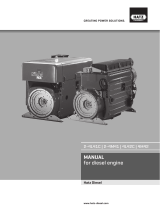 Hatz Diesel 2-4M41 User manual
Hatz Diesel 2-4M41 User manual
-
Power Fist 8399677 Owner's manual
-
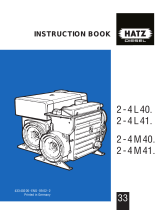 Hatz 2 - 4 M 41 Instruction book
Hatz 2 - 4 M 41 Instruction book
-
Hatz 4M42 Instruction book
-
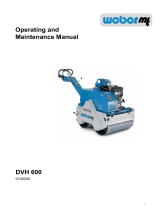 Weber mt DVH 600 L-2 Operating instructions
Weber mt DVH 600 L-2 Operating instructions
-
Subaru RGD5000H User manual
-
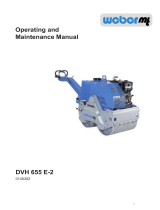 Weber mt DVH 655 E-2 Operating instructions
Weber mt DVH 655 E-2 Operating instructions
-
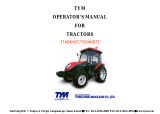 TYM T554HST User manual
TYM T554HST User manual
-
Husqvarna LFV 80 User manual
-
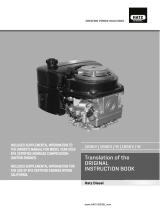 Hatz 1B30V Instruction book
Hatz 1B30V Instruction book









































































































































































































































